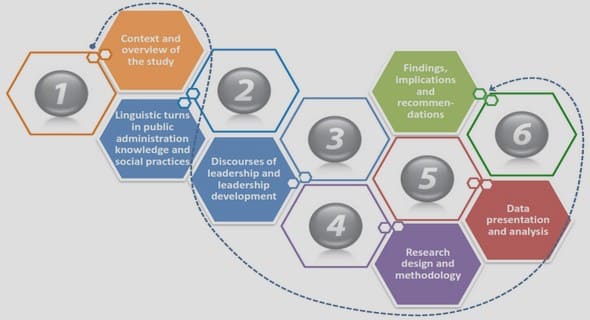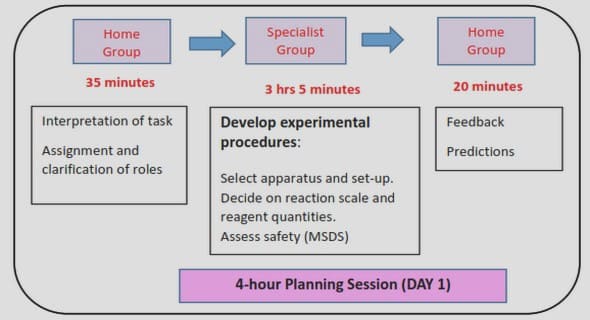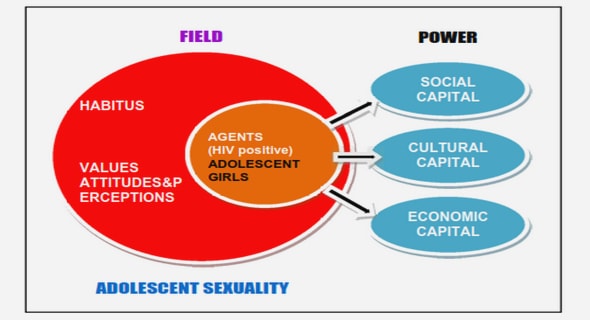Get Complete Project Material File(s) Now! »
Methodology
To be able to conduct an accurate analysis, it’s essential that the methodology is suitable towards the proposed purpose of the study as well as executed with rational thinking. This segment will contain a description of the research philosophy, an assortment of relevant approaches, the research method, the data gathering as well as analysis of data.
Methodology
A method is to be defined as the organization of an activity, of which the activity is labeled as the functional behavior of any human. This on its own signifies that humans dispose of an activity onto definite and special patterns with its own features. These features, possess the capability in order to progress and emerge in forthcoming findings. A specified or precise research methodology strives towards a simplifying regarding the rules and principles of that research. Furthermore, the research methodology generalizes certain behaviors among humans in order to complete a more sufficient understanding of them and its context to the research in question. Over the years, the methodological research has taken its turn towards a digitalization, moving from a knowledge based upon theoretical aspects onto more analytical data, enabled and made more comprehensible by programs. Gathered statistics, in combination with the programs, let research to progress into more vastly developed formulas, which has guided enhanced structure to research methodology (Novikov & Novikov, 2013).
Research philosophy
General understanding of research philosophy shows five major visions, or philosophies, with regards to the research within business and management. These philosophies are found to be positivism, pragmatism, postmodernism, critical realism and lastly interpretivism (Saunders, Lewis, & Thornhill, 2016). However, the two main models to be found are considered positivism and the interpretivism as these two are to be found as the main philosophies regarding the essentials of knowledge, existence, and reality. Positivism is considered frequently to sustain a connection towards the research of natural sciences, which in general embraces systematic processes regarding observations and trials. Furthermore, this philosophy is conducted with both logic, rationality, and accuracy to clarify occurrences and phenomena to foresee and predict outcomes by relating possible connections. However, the general method to gather and process the data collection is considered to be quantitative, retaining wider samples as a contradict to interpretivism (Collis & Hussey, 2013).
The later, interpretivism, aims towards generating new understandings, interpretations, and explanations regarding the social world, including relevant frameworks and context (Saunders et al., 2016). Moreover, interpretivism additionally condemns the vision of positivism since its argued that the social reality is not neutral nor objective but rather severely subjective. This is arguably aroused from the fact that reality normatively is formed by the perceptions of humans, which therefore argues for a more qualitative methodology with regards to research that emphasizes not only investigating but also analyzing and most and foremost understanding of the social phenomena (Collis & Hussey, 2013).
Hence, taking these two major visions into account, this paper will work through an interpretive philosophy as the study is aimed towards interpretation and understanding of how customer’s views, values and signifies the unconscious importance of product experience within the buying process of premium automobiles. Moreover, as the reasoning behind the key visions of this thesis comes from studying and interpretation of a social phenomenon, considered subjective, another call for an interpretive source of philosophical research is considered most appropriate. The authors undoubtedly find the main area of research within this paper quite difficult to comprehend in a quantitative manner and therefore reasons for a distinctive understanding of the perceptions and motives of each individual through qualitative interviews.
Thus, it exists three various methodological visions within research; the deductive, the inductive and finally the abductive approach. The deductive approach is normatively utilized while constructing a theory through the gathering of information, most and foremost from academic sources of research that later forms strategies to test a potentially developed theory. Even though this approach is most frequently applied to quantitative research, it’s still relevant to forms of qualitative studies as well. Moreover, an inductive approach is commonly applied for research with a qualitative perspective, which initiates by collecting data. The data is then applied to a investigation of the phenomenon, enabling the structure and creation of theories that apply to function as a conceptual framework for the research. The underlying reasoning behind this approach is simplified to enable enrollment and discovery of new concepts and theories (Saunders et al., 2016).
Finally, the third approach is an alternative to the deductive and inductive approaches, which is considered as a combination of the and therefore generates a third alternative. This vision, the abductive approach, is perceived by identifying patterns, repetitions, and ideas whilst studying a specific occurring or phenomena. This, together with a concurrent testing of additional data, utilizes the possibility to observe new or unexpected variables that occur either preliminary or throughout the collection of data. This process enables analyzing of applicable research and theories regarding the occurring of the data in question (Saunders et al., 2016). Therefore, the abductive approach is chosen for the scope of this paper as its philosophy applies very well towards the intended vision of this paper. Mostly while examining the combination of existing literature and theories together with the collection and analyzing of new data, but also through the interpretation of the research as a whole. Additionally, the abductive approach is considered the most suitable for this research as it basically combines all forms of known information in order to form a conclusion based upon discovered observations, which once again suits the purpose of this study exceptionally.
Methodological technique – Semi-structured interviews
The elaborate concept of semi-structured interviews is utilized in this paper regarding the data collection in order to understand and comprehend the perceptions and reasoning of the interviewed customers. The semi-structured technique is selected as a collection of data since that method enables understanding of somewhat ambiguous and indefinite information regarding the emotions, connections and, views of consumers (Harrell & Bradley, 2009). The conducted interviews cover various relevant consumers of product experiences within the premium segment of the automotive industry, with a variety of gender, age, occupations, knowledge and, experience of the topic in question. Moreover, the participants vary regarding geographical origins in Sweden which enables a strive towards a various and diverse sample group. Furthermore, every informant has unique and differentiated perception and understanding regarding cars in general, as a result of occupations, level of income as well as life experience and personal interest.
Research Method
In the initial stage of the research process, the authors chose to conduct a preliminary frame of reference in order to essentially comprehend the subject of investigation as well as grasp the already existing literature and conducted research on the topic. This general understanding of the subject supported the forming of relevant and suitable questions for the semi-structured interviews. The data collected from the qualitative interviews later contributed with additional relevant topics worth investigating, which therefore led to further complements of secondary data to the existing frame of reference. Therefore, this theoretical framework presents various relevant areas of previous research that contributes to the understanding of the topic investigated in this paper. This framework also includes relevant concepts and models that later was implemented in the combined analysis of the all empirical data.
The existing literature and previously conducted research were collected through numerous electronic databases as well as various search engines. The databases utilized for this paper was identified by going through the different search engines, where the electronic search engine of the Jönköping University library, entitled ‘Primo’, was frequently used as well as ‘Google Scholar’, both being vital tools in the secondary data collection of this research. Moreover, to enable the gathering of relevant previous research, various thoughtful keywords and criteria were chosen as a part of the collection of secondary data. The search terms were various, but mostly included, separately and/or joint together; “product experience”, “automotive industry”, “branding”, “branding in the automotive industry”, “automotive industry”, “buying behavior”, “premium automobiles”, “premium branding”, “NeedScope”, “premium segment” and “premium product experience”. Additionally, an emphasis was put on finding peer-reviewed articles with a high number of citations as they were considered more suitable and reliable as a foundation for a theoretical framework.
The qualitative primary data for this research was collected through semi-structured interviews with several participants contributing to their thoughts and perceptions of how product experiences affect their probability to buy a premium automobile. The choice of semi-structured as the format for the interviews was a conscious choice based upon the wishing of seeking answers to the pre-decided principal question but with additional space for an open climate for discussion and impulsive following questions. This was reasoned for as it were to generate a deeper and wider understanding of the perceptions of the target population for the study as well as enabling further discussions of the topic in question. As a contradict, the authors believe that a sole usage of prepared questions would limit this discussion and to some extent eliminate possible interesting observations and arguments. The major motive behind the prepared questions was to add a somewhat structure to the interview without guiding the individual being interviewed to any specific answers or reasoning. Moreover, the semi-structured would, therefore, contribute to the highest extent for this study as it would enable a wide and open discussion of the subject of premium automobiles, previous experiences, the probability of future ownership and likewise whilst minimizing the risk of the discussion becomes irrelevant.
1. INTRODUCTION
1.1 BACKGROUND
1.2 PRODUCT EXPERIENCE
1.3 BUYING PROCESS
1.4 MARKETING AND BRANDING IN THE AUTOMOTIVE INDUSTRY
1.5 THE PREMIUM SEGMENT IN THE AUTOMOTIVE INDUSTRY
1.6 THE PREMIUM SEGMENT WITH REGARDS TO THIS PAPER
1.7 PROBLEM FORMULATION
1.8 PURPOSE AND RESEARCH QUESTION
1.9 DELIMITATIONS
2. FRAME OF REFERENCE
2.1 FRAMEWORK OF PRODUCT EXPERIENCE
2.2 THE BUYING PROCESS
2.3 BRANDING
2.4 BRAND HERITAGE
2.5 NEEDSCOPE THEORY
3. METHODOLOGY
3.1 METHODOLOGY
3.2 RESEARCH PHILOSOPHY
3.3 METHODOLOGICAL TECHNIQUE – SEMI-STRUCTURED INTERVIEWS
3.4 RESEARCH METHOD
3.5 DATA GATHERING
3.6 DATA ANALYSIS
3.7 CREDIBILITY OF RESEARCH
4. FINDINGS
4.1. THE PURPOSE OF THE CAR
4.2. PREVIOUS OWNERSHIP
4.3. BRAND LOYALTY – SHIFTING BRANDS OR NOT?
4.4. BRAND AVOIDANCE – WHAT MAKES A BRAND UNDESIRABLE?
4.5. INFLUENCE OF MARKET DIVERSIFICATION
4.6. CUSTOMER BRAND INTERPRETATIONS
5. ANALYSIS
5.1. THE IMPACT OF PRODUCT EXPERIENCE
5.2. BAD EXPERIENCE VS NO EXPERIENCE
6. CONCLUSION & DISCUSSIONS
6.1. CONCLUSION
6.2. DISCUSSION
REFERENCES
APPENDIX
GET THE COMPLETE PROJECT
Branding in the automotive industry: The role of product experience in the buying process of the premium segment in Sweden. BACHELOR THESIS


